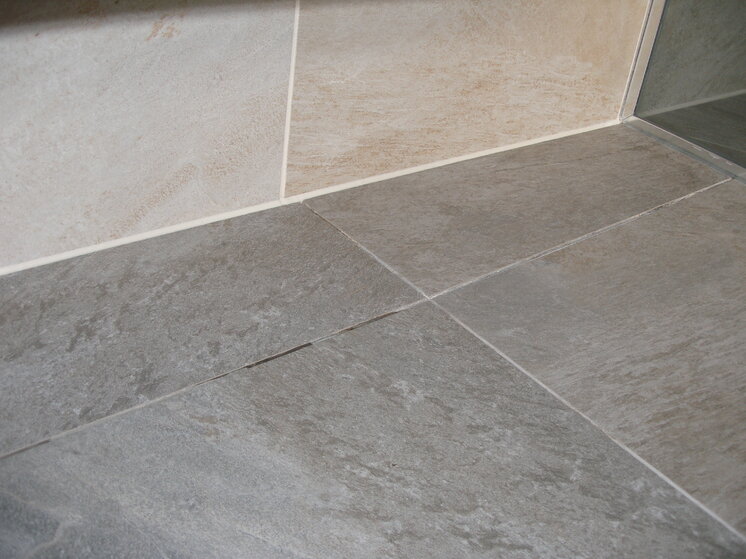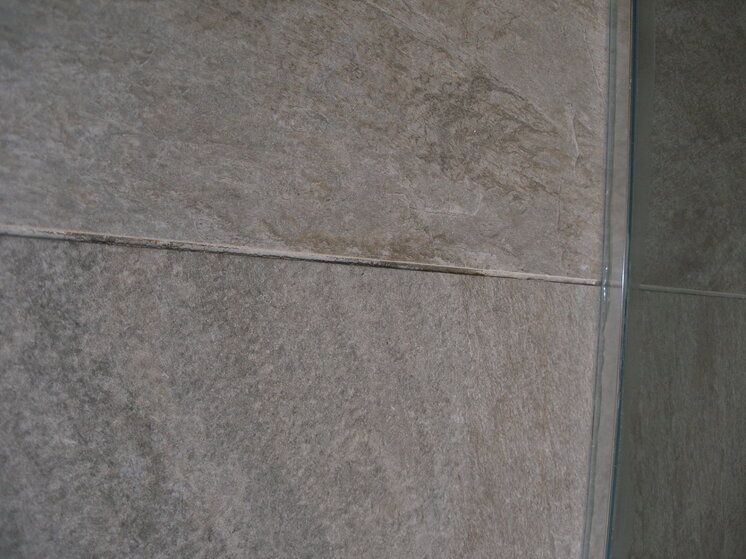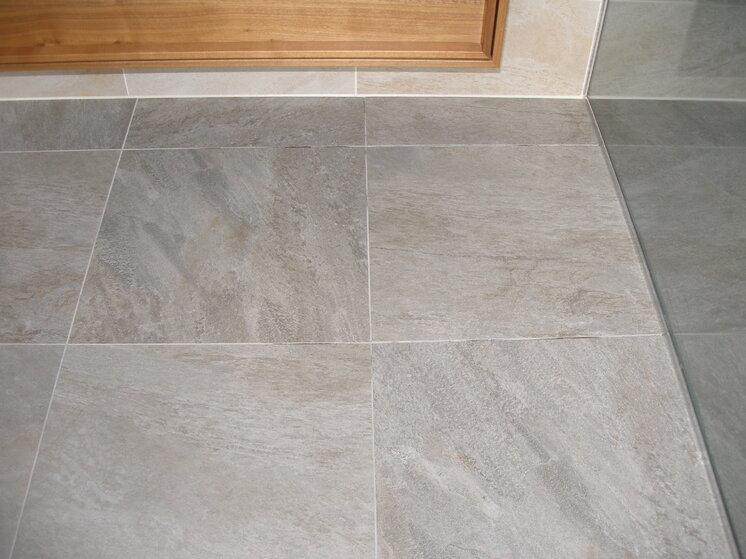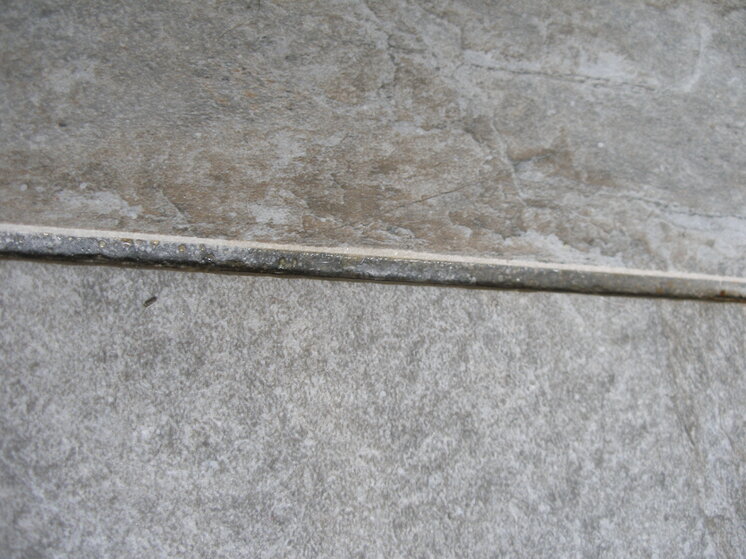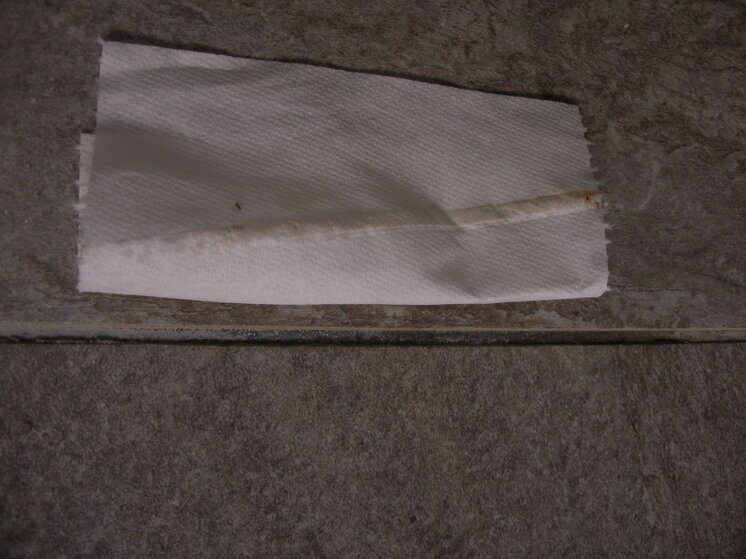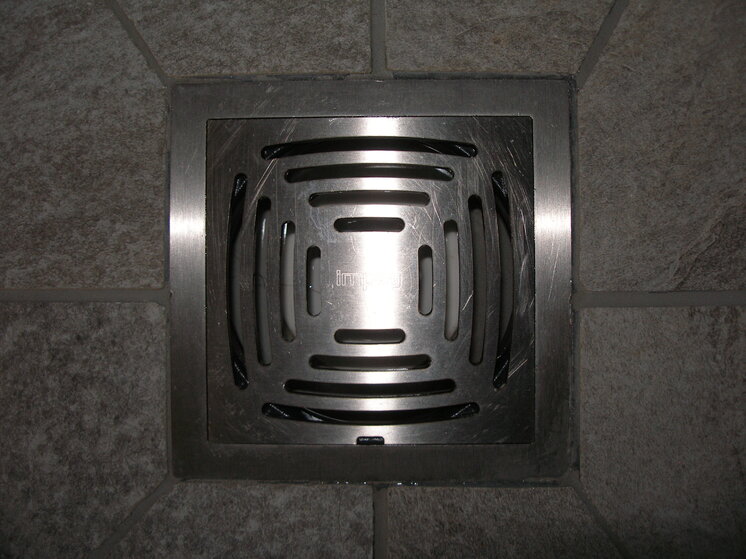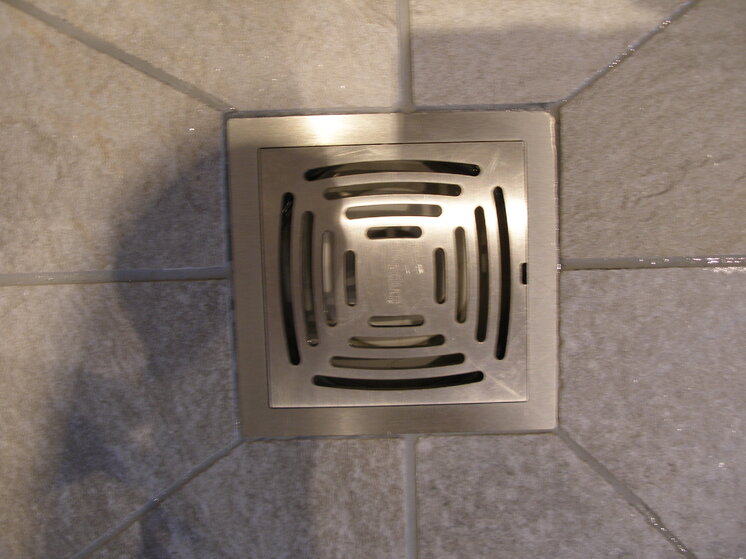P
Paula
We had a wet room installed about 8 months ago. The floor is tiled with large 60x60cm porcelain tiles laid on Impey Waterguard membrane and the shower tray is Impey Aquadec Easyfit with the membrane laid over the top. It is a new-build first floor bathroom (new extension on older house) with a suspended timber floor. The tiles appear to be laid well and there has been no obvious movement or cracking of grout (Bal Micromax). However, almost immediately we noticed that in the shower area some areas of grout (which is light grey) did not dry out, and over time about 50% of the grout lines were permanently dark, even when the shower was not used for a few days. I searched tiling forums and became concerned that the tiles had been laid on an incomplete layer of adhesive, and that water was pooling underneath them, leading to permanently wet grout, but could not see any evidence of the tiles coming up or moving about, which usually seems to happen with problems like this.
Our builder called back the tiler who swore that he had used the correct amount and type of adhesive, and said that if he had not done so then the grout would have cracked on the floor. Bal, the grout and adhesive manufacturers, were called, but their "expert" tried to claim that the dark patches were not, in fact, wet, but possibly mould or even dirt! He agreed that it looked like the tiles had been correctly laid and suggested leaving the floor to dry and then replacing the grout and then using a sealer to stop water soaking through the grout. When I mentioned the possibility of adhesive not covering the back of the tiles, he agreed with the builder that it was very difficult to achieve a completely flat bed of adhesive, suggesting that it was almost inevitable that some pooling of water under the tiles would occur, leading to patches of wet grout.
We agreed to wait for the floor to dry out. We are now on week 5 (in a warm room with underfloor heating in the rest of the floor away from the shower tray!) and there is still a small wet patch, but most is back to the normal light grey colour. It took about 3 weeks for most of the moisture to go and the dark patches to disappear, so we have now discounted the mould/dirt theories, but are concerned that there must have been quite a lot of water sitting under the tiles for them to remain wet so long! The builder now just wants to seal the dried grout, and not re-grout at all. He is refusing to do anything else.
I have talked to most of the manufacturers of grout sealers, and they all say that their products will not completely waterproof grout, so I cannot see that this will be a long-term solution (also, don't fancy waiting for the floor to dry out each time it needs re-applying!). Epoxy grout seems like a good idea, but the builder seems to think that it would eventually crack if used on a timber floor (although when I spoke to Mapei about Kerapoxy they said that it should be fine as long as the floor is not bouncing around a lot, which it is not).
What I'd really like advice on is:
- is it normal to have permanently wet patches in grout on wet room floors even if the floor appears to be well laid?
- if we leave the floor as it is, will we be storing up trouble for the future? Am I being too fussy??!
- Is it possible to lay tiles in a pre-formed shower tray on a completely flat bed of adhesive, or will there always be gaps for water to collect in?
- Should we consider a grout sealer or epoxy grout to solve the problem or do the tiles need taking up and re-laying? (massive Job I imagine as
there is a huge glass shower screen resting on one grout joint and the membrane may be damaged in the process?)
It does feel like I am being fobbed off by the builder and the tiler, but admittedly the wet grout patches are the only problems so far. It would be great to hear from anyone who has had similar problems. I can't quite see the point of having tiled shower trays if they always look different to the rest of the tiled floor!
Thanks!
Our builder called back the tiler who swore that he had used the correct amount and type of adhesive, and said that if he had not done so then the grout would have cracked on the floor. Bal, the grout and adhesive manufacturers, were called, but their "expert" tried to claim that the dark patches were not, in fact, wet, but possibly mould or even dirt! He agreed that it looked like the tiles had been correctly laid and suggested leaving the floor to dry and then replacing the grout and then using a sealer to stop water soaking through the grout. When I mentioned the possibility of adhesive not covering the back of the tiles, he agreed with the builder that it was very difficult to achieve a completely flat bed of adhesive, suggesting that it was almost inevitable that some pooling of water under the tiles would occur, leading to patches of wet grout.
We agreed to wait for the floor to dry out. We are now on week 5 (in a warm room with underfloor heating in the rest of the floor away from the shower tray!) and there is still a small wet patch, but most is back to the normal light grey colour. It took about 3 weeks for most of the moisture to go and the dark patches to disappear, so we have now discounted the mould/dirt theories, but are concerned that there must have been quite a lot of water sitting under the tiles for them to remain wet so long! The builder now just wants to seal the dried grout, and not re-grout at all. He is refusing to do anything else.
I have talked to most of the manufacturers of grout sealers, and they all say that their products will not completely waterproof grout, so I cannot see that this will be a long-term solution (also, don't fancy waiting for the floor to dry out each time it needs re-applying!). Epoxy grout seems like a good idea, but the builder seems to think that it would eventually crack if used on a timber floor (although when I spoke to Mapei about Kerapoxy they said that it should be fine as long as the floor is not bouncing around a lot, which it is not).
What I'd really like advice on is:
- is it normal to have permanently wet patches in grout on wet room floors even if the floor appears to be well laid?
- if we leave the floor as it is, will we be storing up trouble for the future? Am I being too fussy??!
- Is it possible to lay tiles in a pre-formed shower tray on a completely flat bed of adhesive, or will there always be gaps for water to collect in?
- Should we consider a grout sealer or epoxy grout to solve the problem or do the tiles need taking up and re-laying? (massive Job I imagine as
there is a huge glass shower screen resting on one grout joint and the membrane may be damaged in the process?)
It does feel like I am being fobbed off by the builder and the tiler, but admittedly the wet grout patches are the only problems so far. It would be great to hear from anyone who has had similar problems. I can't quite see the point of having tiled shower trays if they always look different to the rest of the tiled floor!
Thanks!
Last edited by a moderator:




